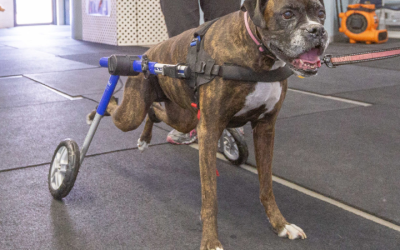When your feline companion is limping, avoiding playtime, or showing signs of discomfort in their paw, it can be a cause for concern. Cats are masters at hiding pain, which makes it even more crucial for pet owners to seek timely and accurate diagnostics. Many pet guardians turn to online searches like Cat Paw X Ray Monmouth County NJ when they notice their cat is in distress, hoping to find reliable solutions for a speedy recovery. By utilizing advanced diagnostic tools, veterinarians are better equipped to pinpoint the exact cause of your cat’s discomfort and initiate appropriate treatment sooner.
The Importance of Accurate Diagnosis
Cats use their paws for almost every daily activity, from jumping and climbing to grooming and playing. Any injury or abnormality in the paw can significantly impact their quality of life. Swelling, limping, or reluctance to put weight on a paw can stem from a variety of causes, including fractures, sprains, infections, or embedded foreign objects. Visual inspection alone often falls short in identifying the underlying issue, making imaging technology essential.
A Cat Paw X Ray Monmouth County, NJ, provides a non-invasive way to look beneath the surface. Unlike physical exams, X-rays allow veterinarians to see bones, joints, and soft tissues in detail. This enables them to:
• Detect fractures or bone abnormalities that may not be visible externally
• Identify joint dislocations or early signs of arthritis
• Locate foreign objects such as splinters or glass shards
• Evaluate soft tissue injuries, including ligament or tendon damage
How X-Rays Contribute to Faster Recovery?
Timely intervention is key to ensuring your cat’s swift return to health. X-rays provide clear, immediate information that guides veterinarians in developing targeted treatment plans. Here’s how this diagnostic approach accelerates recovery:
Early Detection and Treatment
With rapid imaging results, veterinarians can quickly confirm or rule out serious injuries. Early detection means treatment can begin promptly, reducing the risk of complications and minimizing your cat’s discomfort.
Tailored Treatment Plans
By understanding the precise nature and location of the injury, veterinarians can recommend the most effective therapies, whether it’s rest, medication, splinting, or, in rare cases, surgery. This individualized approach prevents unnecessary treatments and supports optimal healing.
Monitoring Progress
Follow-up X-rays allow for ongoing assessment of the healing process. Adjustments to the treatment plan can be made as needed, ensuring your cat is progressing toward full recovery without setbacks.
When Should You Consider a Cat Paw X-Ray?
Not every paw issue requires an X-ray, but certain signs indicate the need for advanced diagnostics:
• Persistent limping or refusal to bear weight
• Visible swelling or deformity in the paw
• Sudden changes in behavior or activity level
• Wounds that do not heal or signs of infection
• Unexplained pain, especially after a fall or injury
If any of these symptoms are present, consulting a veterinarian and discussing the option of a paw X-ray can make a significant difference in your cat’s recovery timeline.
Ensuring Your Cat’s Comfort and Well-Being
Modern veterinary clinics utilize safe, low-dose digital X-rays that are quick and minimally stressful for pets. By working with professionals who prioritize your cat’s comfort, you can feel confident that your feline friend is receiving the highest standard of care.
In summary, opting for a cat paw X-ray when injury or illness is suspected provides a clear path to diagnosis and recovery. With faster, more accurate information, veterinarians can address your cat’s needs with precision and compassion. Prompt imaging and personalized treatment pave the way for a quicker return to playful, pain-free days for your beloved pet.


